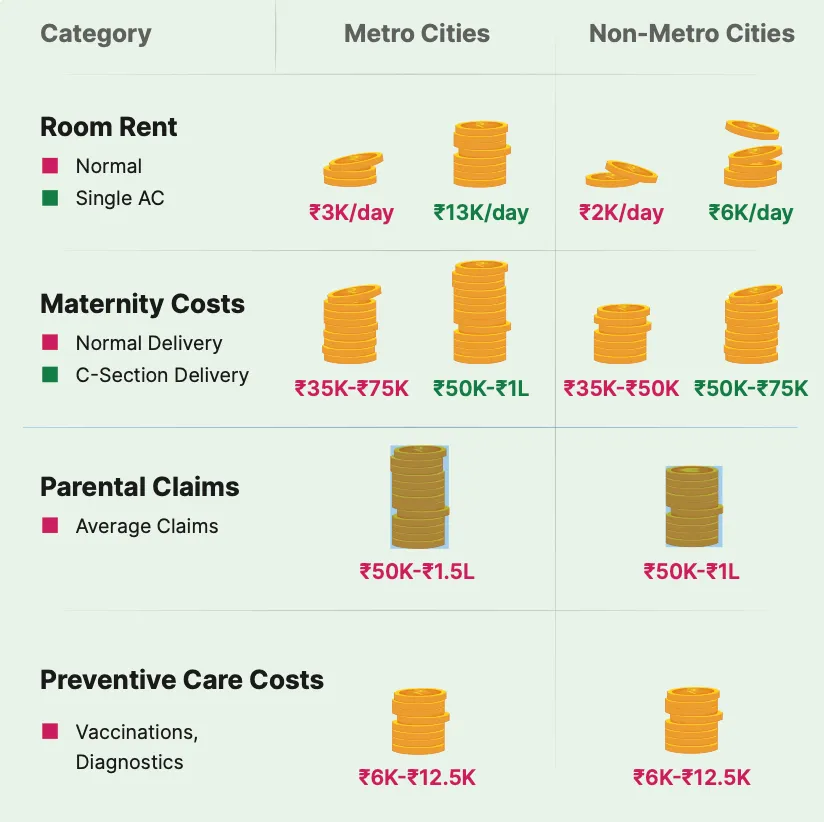Quick Summary
Let's dive in this blog to understand, how you as an HR, set limits in your coverage, which covers your employee needs, and limiting on your spend as well.
Let's dive in this blog to understand, how you as an HR, set limits in your coverage, which covers your employee needs, and limiting on your spend as well.
“Every employee has different needs; therefore, a one-size-fits-all approach can never be appropriate for our organization. We sought something flexible and easily accessible for our employees, " said Sumithra , key leader at Exotel.
This reflects the recent approach of many HR professionals in the Indian corporate world. Consider this: you want to ensure your employees are protected, but what if you provide a group health insurance policy or employee insurance for them, and they are not even utilizing the benefits properly? It results in waste- not only of the benefits but also of your company's money, leading to employees feeling a lack of satisfaction that typically accompanies employer protection. Loyalty and trust become just a bonus is the employee is covered well. Let's dive in this blog to understand, how you as an HR, set limits in your coverage, which covers your employee needs, and limiting on your spend as well.
As an HR professional, one of your most significant responsibilities is selecting the right group health insurance that aligns with your employees' needs and the company's budget. The coverage limits you set can deeply impact employee satisfaction and your organization's health benefits budget. Here's a practical guide tailored for HR professionals to navigate these decisions effectively.
Start by understanding who makes up your workforce. Are they mostly young individuals, or do you have a substantial number of families? Do they have specific health risks due to the nature of their job? An IT company might have employees dealing with stress and sedentary lifestyle-related ailments, while a manufacturing firm might need to focus more on occupational hazards.
For example, companies like Tredence, Cashfree, Open Financial Technologies, and Scaler are leading the pack. They've teamed up with Pazcare to ensure their health insurance policies embrace everyone, including the LGBTQ+ community. This proactive step highlights a significant shift towards more inclusive workplace practices.
Pazcare is a leading provider of group health insurance solutions committed to inclusivity. We offer flexible plans that easily incorporate LGBTQ+ coverage, ensuring all employees feel valued and protected. With Pazcare, companies can seamlessly add LGBTQ+ coverage to their existing employee insurance plans. This includes extending coverage to same-sex domestic partners and their dependents. If employers choose to provide wellness programmes for their employees, with their dependents providing mental health services to LGBTQ+ needs, they can do that, too.
Time to strategically provide employee benefits.
Coverage limits need to cover the essentials but also address common health concerns specific to your employees:
Coming back, to looking at the demographics of your employees. Understand their needs, and what do they actually need. Do a survey at your workplace and invovle the employees in the planning of the kind of group health insurance coverage you want to provide for them.
Want to know how you can budget for group health insurance this financial year? Read more.
Choosing lower premiums is tempting, but make sure out-of-pocket costs, such as deductibles and copays, are manageable for your employees. If these are too high, your well-intentioned insurance benefits could feel burdensome to the team.
If you are looking for ways to add group health insurance in your FY budget, you can refer to our guide which is made for this purpose solely.
Consider adding benefits that can distinguish your company:
Wondering what are the pros and cons of Group Health Insurance? Read more
Healthcare costs vary significantly based on location and the type of care required. In metro cities, where the demand for premium healthcare services is higher, costs tend to be steeper. Below is a table that illustrates typical healthcare costs which can guide your decision-making process when setting up your policy:

No matter how good your coverage is, it won't be appreciated if your employees don't understand it:
Utilize a robust HR platform that allows employees to easily access their insurance information, submit claims, and track them in real time. This transparency can greatly enhance trust and satisfaction with the insurance process.
Health insurance needs can evolve, so annual reviews of your policy's performance and relevance are crucial. Gather feedback from employees to see if the current limits are meeting their needs or if adjustments are necessary.
Choosing the right group health insurance is more than just a financial decision; it's a significant factor in your company's culture and employee satisfaction. By thoughtfully setting coverage limits, communicating effectively, and regularly revisiting the needs of your team, you can ensure that your group health insurance policy is a valuable asset to both your company and your employees.
This strategic approach not only supports your team's health but also reinforces your company's commitment to their well-being, making your workplace a sought-after place to work.

